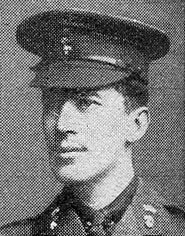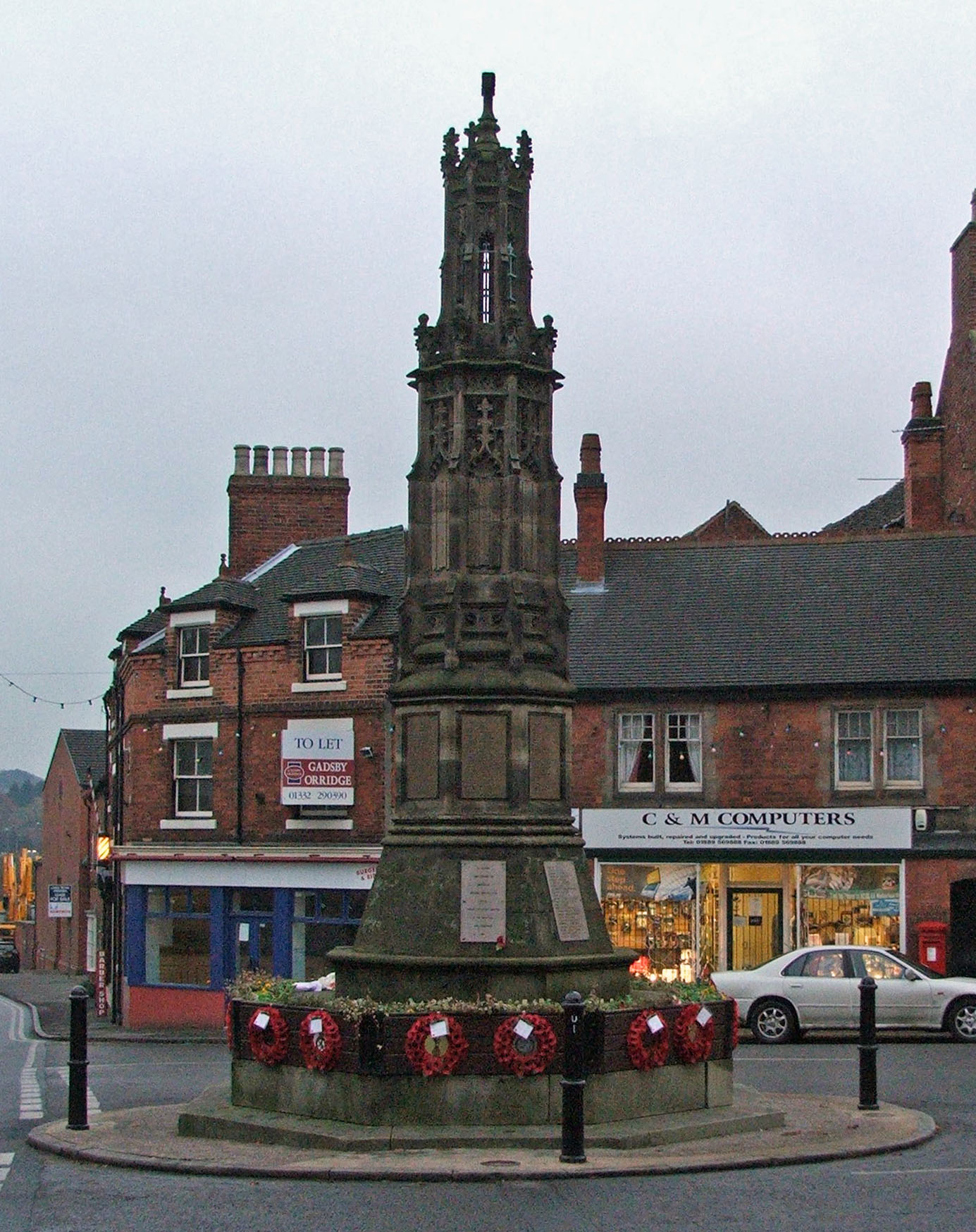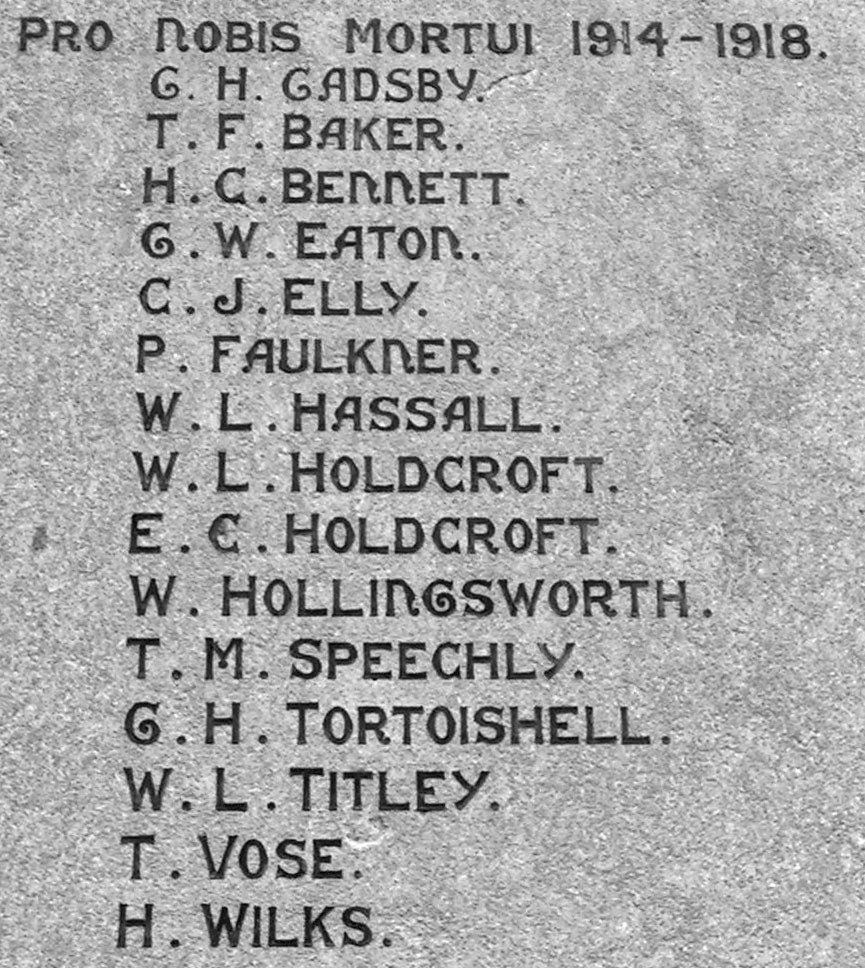
EATON, GUY WELLESLEY (M.C.)

|
|
CWGC |
SDGW |
Uttoxeter Advertiser |
Other |
|
|
Parents |
Richard Arthur Eaton and Florence Emily Eaton |
|
|
|
3 (Father: Letter of 14 May 1917 from solicitors to War Office) 3 (Mother Plaque and Scroll letter) |
|
Where born |
Ireland |
|
|
|
|
|
When born |
20th July 1890 |
|
|
|
|
|
Where educated |
St. Andrew’s College, Dublin |
|
|
|
4, 10 |
|
Cowbridge Grammar School, South Wales |
|
|
|
4, 10 |
|
|
About to graduate in science at London University when the war broke out |
|
|
|
4,10 |
|
|
Address |
Black Rock, Dublin |
|
|
1 |
|
|
Maryville, Blackrock, Co. Dublin (self, at the time of enlisting) |
|
|
|
3 |
|
|
27 Newtown Avenue, Blackrock, Co. Dublin (mother) |
|
|
|
3 (plaque & scroll letter) |
|
|
Spouse |
No |
|
|
|
3 (Letters of Administration) |
|
Children |
|
|
|
|
|
|
Employment Before Joining up |
Schoolmaster at Thomas Alleyne’s Grammar School |
|
|
1, 2 |
Thomas Alleyne’s School History |
|
Where enlisted |
Dublin |
|
|
|
3 (Enlistment medical record) |
|
Brigade |
95th |
|
|
|
5 (page 44, note 10) |
|
Regiment |
Royal Irish Fusiliers (Princess Victoria’s) |
Yes |
Yes |
|
3 (several documents) 8 |
|
Unit |
8th Bn. |
Yes |
Yes |
|
3, 8 |
|
Rank |
Captain |
Yes |
|
1, 2 |
3 (several documents) 8, 10 |
|
Temporary Captain |
|
Yes |
|
3, |
|
|
Service Number |
|
|
|
|
|
|
Date of Death |
6 September 1916 |
Yes |
Yes |
|
3 (several documents, including the official report of his death) 8, 10 |
|
7th September 1916 |
|
|
|
4 quotes a letter from his Colonel, who said that he was wounded on the 6th and died on the 7th. |
|
|
Age at time of death |
26 |
|
|
|
3 (implied from several documents) 4, 10 |
|
Where Killed or died |
France/Flanders: Somme – Luize Wood |
|
|
2 |
|
|
France/Flanders: Somme – Leuze Wood |
|
|
|
8 |
|
|
How he died |
Killed in action |
|
Yes |
|
3 |
|
Died of Wounds |
|
|
1 |
3 |
|
|
Location of Grave or Memorial |
Thiepval Memorial for the Missing - Pier and Face 15 A. |
Yes |
|
|
|
|
Awards |
· Certificate of Vellum |
|
|
2 |
|
|
· Military Cross, gazetted 22nd September 1916 |
|
|
1, 2 |
Medal card 10 |
|
|
· Something posthumous? |
|
|
|
|
|
Guy Wellesley Eaton was the third son of Richard and Florence Eaton. [10] He was also a grandson of R.J Eaton, RM. His mother was a daughter of Mr. Thomas Tighe Mecredy. [10]
Guy’s obituary in the Uttoxeter Advertiser described him as ‘a tall, handsome man’.
He came from Black Rock, Dublin and was a master at the Uttoxeter’s Thomas Alleyne’s Grammar School.
He was evidently important to Uttoxeter because his name appears on three of its town memorials – the town memorial, St. Mary’s Church Memorial and the school’s War Memorial.
 |
 |
|
|
St. Mary’s Church is in Church Street, Uttoxeter The war memorial is inside the church |
|
|
|
| Thomas Alleyne’s School memorial panels are situated on the wall of Trinity Hall in Back Lane, Uttoxeter. |
|
 |
|
Guy took a commission at the outbreak of war and within a few months he had been promoted to Captain.
Strangely, however, The obituary from the Irish Times, which is kept in his official file in the National Archives, says that he was about to graduate in Science at London University when the war broke out. This does not fit well with other facts that we know to be true.
We know that Guy was a schoolmaster at Thomas Alleyne’s School in Uttoxeter because he is mentioned in the School’s History and his obituary in the Uttoxeter Advertiser confirms it.
According to the Irish Times obituary, Guy was educated at St. Andrew’s College, Dublin, and Cowbridge Grammar School, South Wales. The former appears to be correct because he is commemorated on the War Memorial in St. Andrew’s College. The latter is less certain and has not been verified yet.
St. Andrew’s College is situated in Booterstown Avenue, Booterstown, County Dublin. Their war memorial is in the hall.
The Irish Times obituary also says that when the war broke out he joined the Dublin University Officers’ Training Company and was gazetted Second Lieutenant in the Royal Irish Fusiliers. Guy’s application form for a Commission was endorsed by the Adjutant of the Dublin University O.T.C., which confirms at least part of this.
The Irish Times obituary also says that he was promoted to Captain on 1st February 1915. [4] This date is consistent with the official documents.
The original form that Guy competed in his own hand to apply for his Temporary Commission still exists and can be seen in the National Archives at Kew.
His recruitment medical was conducted on the 5th September 1914, barely a month after the outbreak of war. The information which was recorded, such as the facts that he was 5’11” and weighed 149lbs, helps us to form a picture of what he looked like. According to the record of the War Service Pension paid to his mother, Guy became a Captain on 1st February 1915.
He was awarded a certificate of vellum from his Divisional Commander for a feat of great gallantry on 11th July 1916. The obituary in the Irish Times quoted from it as follows:
“I have read with much pleasure the reports of your Regimental Commander and Brigade Commander regarding your gallant conduct and devotion to duty in the field on July 11th, 1916, and have ordered your name and deed to be entered in the record of the Irish Division.
- W. G. Hickie, Major-General, Commanding 16th Irish Division”
A few weeks after being awarded the Certificate of Vellum he performed another gallant action, for which he was awarded the Military Cross.
The official report of the action that won him the Military Cross describes the incident as follows: [6]
"For conspicuous gallantry during a raid on the enemy's trenches. His party met with great difficulty in crossing the enemy's wire, but he himself with a sergeant entered the front line. He shot two of the enemy with his revolver. On his return, hearing that another officer had been wounded and was missing, he went out and helped to bring him in under heavy fire".
Guy died of wounds received in action on 6th September 1916.
The Uttoxeter Advertiser’s roll of honour says that he died at ‘Luize Wood’, and this is borne out by the War Diary for his battalion, which places Guy and his company in Leuze Wood on the day he was killed. It also lists him as one of the officers killed on that day.
Leuze Wood is situated in the Somme area close to the town of Combles. It is in the same vicinity as such places as Delville Wood, Guillemont and Montauban. Men from Uttoxeter fought in all of them.
The soldiers’ slang name for Leuze Wood was ‘Lousy Wood’.
Guy’s obituary in the Irish Times quoted the letter which his Colonel wrote to his mother shortly after his death as follows:
“You will probably have received news from the War Office of the great loss not only you, but the battalion, has sustained in the death of your son. He was hit about 7 o’clock on the evening of the 6th September, and died about 3 o’clock this morning at battalion headquarters. His end was quite peaceful, I believe, and he was unconscious when brought to headquarters. I saw him when he was first brought in.
“I cannot tell you what a splendid soldier he was. He was most popular with officers and men alike, and his chief thoughts were for the welfare of his men and the regiment. When he was brought in he kept saying: ‘Hold on, boys, remember the left flank is exposed.’ At the time he received his wound he was holding a very difficult part of the line against a German attack, and he succeeded in preventing the enemy making any appreciable advance.”
In October 1916 the Uttoxeter Advertiser quoted extracts from a tribute which his friend ‘Arjay’ had written in ‘The Motor News’:
"It is only when we receive news of the death of a friend or relative that we fully realise the widespread devastation and grief caused by this awful war.
“I have lost a good many friends and several relatives, but in no case was I so much affected as when I heard of Eaton's heroic exit. I knew him intimately, as child, boy and man. Ever as he grew older, my affection, respect and admiration increased. He was one of the finest characters I have ever met, beloved in his family circle and by everyone who knew him, but more especially by his men, whose interests he put before his own.
“On one occasion during the Boer War I met a wounded Dublin Fusilier in a Co. Wicklow cottage where I was having a cup of tea. He was describing the various engagements in which he took part, and when referring to one of them said:-
“Our poor old Colonel was shot through the lungs there, sir, and had to rejoin at the end of a month before the wound was properly healed.” “Why?” was the comment. “Well, sir,” he said, “the boys did not like the major, but they’d follow the colonel to hell”.
“The story is typical of the Irish soldier, who loves his officer, but the boys of the Royal Irish Fusiliers will have to look elsewhere for their captain who gave his life for them. It appears that the left flank of the Fusiliers was exposed; the position was most critical, for they were being subjected to a desperate attack, but under the eye of their beloved captain, who was in the thick of it, they fought like heroes. At this stage, Eaton was wounded, but not very seriously. He refused, however, to leave his men, and with cheery words of encouragement urged them on. His example was infectious. The Huns were eventually hurled back. Meanwhile, however, he had bled so much, and was in a state of collapse. He died early next morning of heart failure. If one of his men had been similarly wounded he would have received immediate attention, and would undoubtedly be convalescent by this time".
After his death, his mother did not only have to cope with the grief of losing her son. In common with so many others, she also had to contend with the red-tape and bureaucracy of the War Office.